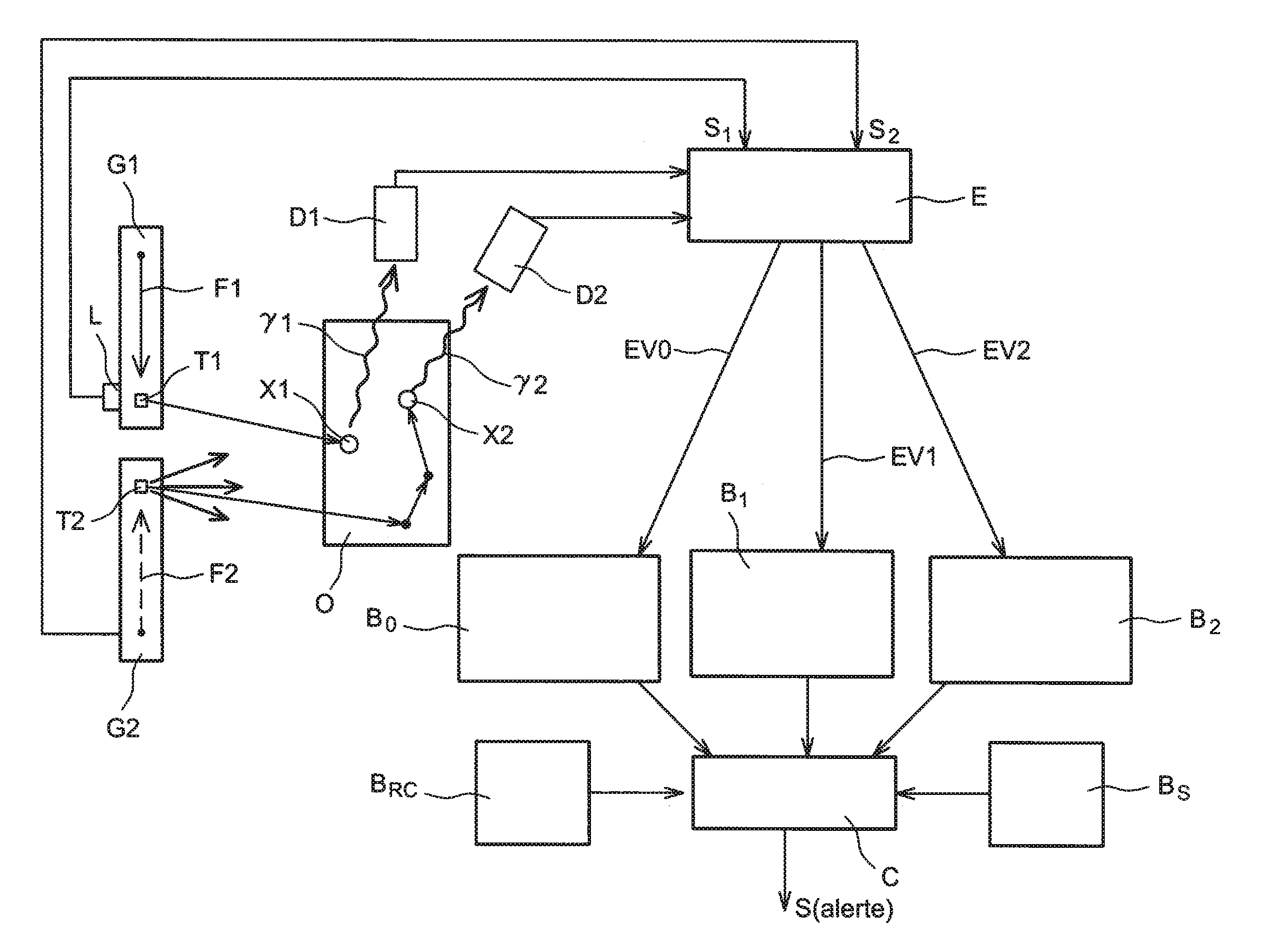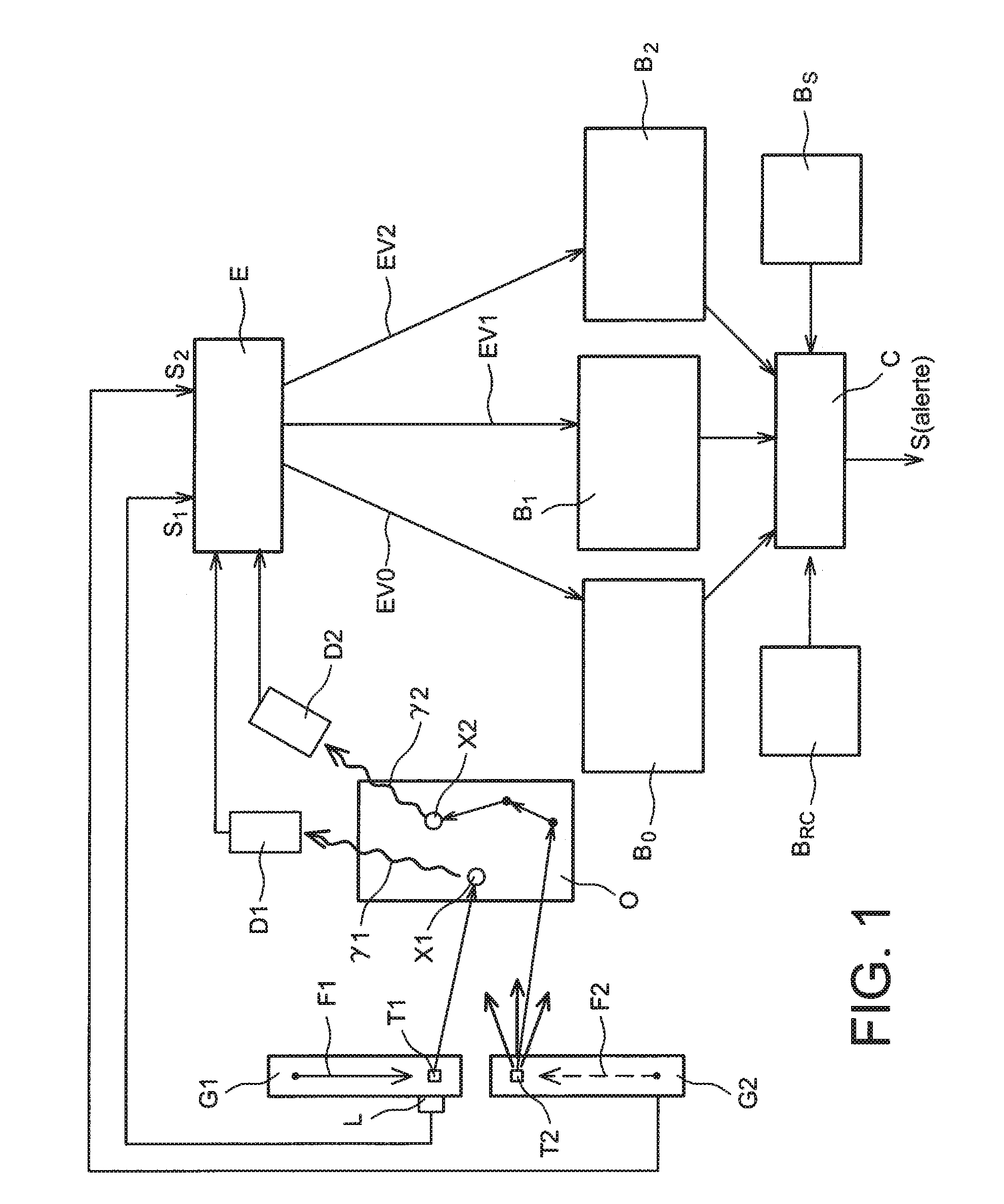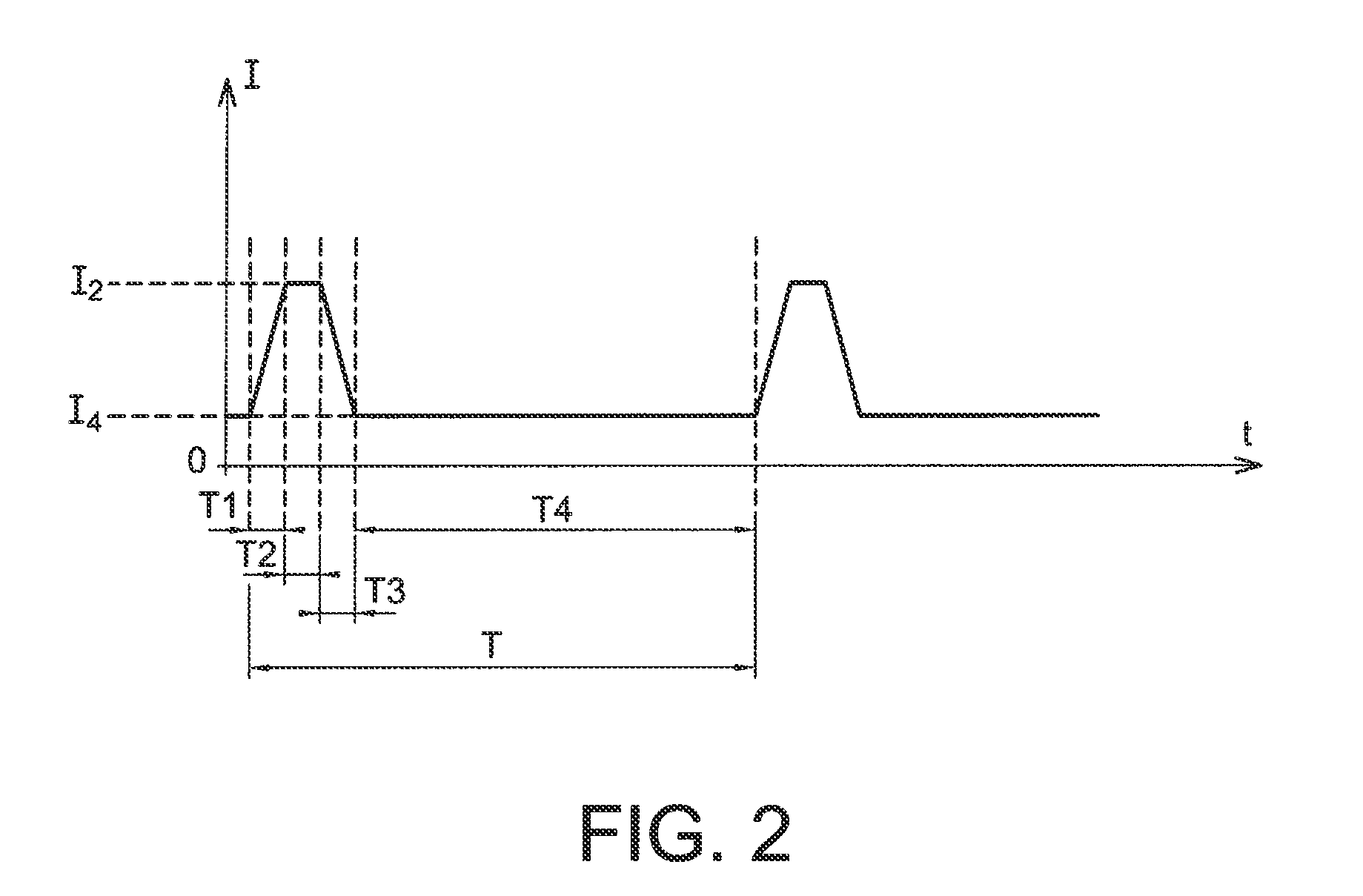Non-intrusive method for detection of chemical elements
a detection method and chemical element technology, applied in the field of non-intrusive detection methods for chemical elements, can solve the problems of large safety risks, inability to detect the capture radiation optimal signal-to-noise ratio, and relatively long total duration of detection operation
- Summary
- Abstract
- Description
- Claims
- Application Information
AI Technical Summary
Benefits of technology
Problems solved by technology
Method used
Image
Examples
Embodiment Construction
[0041]FIG. 1 represents a schematic diagram of a non-intrusive detection system which uses the method of the invention.
[0042]Around object O which may contain chemical elements to be detected, the detection system of the invention includes an associated particle neutron generator G1, a pulsed neutron generator G2, two detectors D1 and D2, an electronic processing circuit E which processes and shapes the signals originating from the detectors D1 and D2, databases Bo, B1, B2 which store the data delivered by the electronic processing circuit E, reference databases BRC and Bs which store, respectively, data relative to the reference capture lines and to inelastic gamma radiation reference spectra, and a computer C which calculates a signal which reveals the presence or absence of chemical element(s) or dangerous products on the basis of the data contained in the databases B0, B1, B2, BRC and BS.
[0043]The neutron generators G1 and G2 emit neutrons some of which are directed towards the ...
PUM
 Login to View More
Login to View More Abstract
Description
Claims
Application Information
 Login to View More
Login to View More - R&D
- Intellectual Property
- Life Sciences
- Materials
- Tech Scout
- Unparalleled Data Quality
- Higher Quality Content
- 60% Fewer Hallucinations
Browse by: Latest US Patents, China's latest patents, Technical Efficacy Thesaurus, Application Domain, Technology Topic, Popular Technical Reports.
© 2025 PatSnap. All rights reserved.Legal|Privacy policy|Modern Slavery Act Transparency Statement|Sitemap|About US| Contact US: help@patsnap.com



